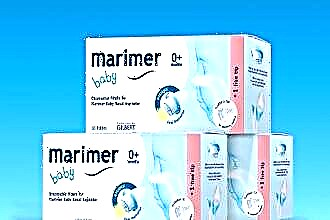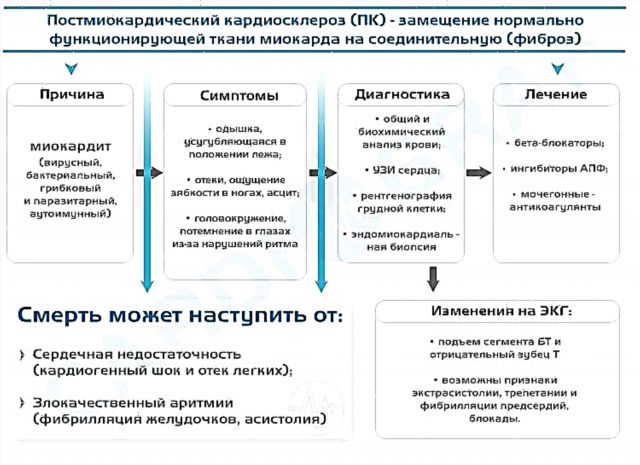The physiological basis of nasal congestion is obstruction (obstruction) of the airways. It occurs due to inflammation of the mucous membranes, which can be triggered by allergens or disease-causing agents. In this case, "grunting" noses in newborns can be a manifestation of physiological rhinitis, which does not require drug therapy. Read on to learn how to treat obstruction of the nasopharynx in newborns and older children.
The opinion of the pediatrician E.O. Komarovsky
 E.O. Komarovsky argues that nasal congestion in a child does not need treatment at all. This is only a symptom indicating the development of a huge number of diseases, some of which are not at all associated with the respiratory system. It is possible to stop the unpleasant manifestations of the disease only if the main causes of the pathology are identified and eliminated.
E.O. Komarovsky argues that nasal congestion in a child does not need treatment at all. This is only a symptom indicating the development of a huge number of diseases, some of which are not at all associated with the respiratory system. It is possible to stop the unpleasant manifestations of the disease only if the main causes of the pathology are identified and eliminated.
The pediatrician draws the attention of parents to the fact that difficulty in nasal breathing in infants in the first 8-10 weeks of life is most often associated with the adaptation of the nasopharynx to environmental conditions.
Physiological rhinitis is a consequence of the defective work of the mucous membranes in the respiratory tract. During the first two to three months of life, they may produce more nasal mucus than they should. However, over time, nasal congestion is eliminated by itself and without the use of drugs.
Most often, babies have a stuffy nose due to the development of an infection in the respiratory tract. The child's body is practically devoid of adaptive (specific) immunity, which helps to cope with the onslaught of pathogens - adenoviruses, staphylococci, rhinoviruses, meningococci, etc. Introducing into the tissues of the nasopharynx, they provoke inflammation and edema, as a result of which the patency of the airways is impaired.
If your nasal congestion does not go away within 2-3 weeks, you need to make an appointment with your pediatrician.
If a child complains of a violation of nasal breathing, first you need to find out what caused the problem. An inexperienced parent is unlikely to be able to independently diagnose the disease. Therefore, if the baby's well-being worsens, you need to seek help from an experienced specialist.
Principles of Newborn Treatment
Few parents understand that in a newborn, the nasopharynx is not quite the same as in adults. The airways in babies are very narrow, so even the slightest increase in the secretory function of the unicellular glands in the mucous membrane leads to a stuffy nose. In most cases, mothers try to cope with the "grunting" of the nose with the help of vasoconstrictor drops. However, conventional drugs often cause allergic reactions in children and even more swelling of the nasopharynx.
Cleansing the mucous membrane from secretions
The first thing to do when nasal stuffing in an infant is to reduce the viscosity of the mucus. Watery secretion is easily evacuated from the airways, making breathing easier. To clear the nasopharynx of discharge, Komarovsky advises to do the following:
- lay the newborn on its back, placing a small pillowcase or towel under the head;
- drip 3-4 drops of "Sodium Chloride" into the nose (you can prepare a saline solution on your own by dissolving 1 teaspoon of salt in 1 liter of boiled hot water);
- take the child in your arms so that he is held upright;
- insert the aspirator tip into the nostril and suck out the accumulated mucus.
Important! Do not bury oil-based drops to liquefy mucus.
Oily nasal preparations such as Pinosol, Eucasept, and Pinovit cannot be used to treat infants. Due to the narrowness of the nasal passages, they stagnate in the nasopharynx, which only worsens the well-being of the newborn.
The use of vasoconstrictor drops
As already mentioned, newborns cannot be instilled with conventional vasoconstrictor drugs. They contain too many active substances that can provoke side reactions - nausea, vomiting, diarrhea, etc. If the violation of nasal breathing is associated with inflammation of the ENT organs, sparing children's drugs will help to eliminate the puffiness:
- Nazol Baby;
- "Nazivin";
- Otrivin Baby.
They can be used only as a last resort and only as directed by the pediatrician. It is important to remember that babies breathe mainly through the nose, so prolonged congestion can cause serious complications.
Moisturizing the nose
If a child grunts his nose, it may be caused by crusts in the nasal passages. They are dried up nasal mucus that occurs due to insufficient moisture in the mucous membrane. Dry or dusty air in the room can provoke their appearance.
Moisturizing nasal drops can help restore normal breathing. With their help, you can not only prevent drying out of the mucous membrane, but also soften and painlessly remove the crusts in the nose. For the treatment of the smallest patients, the following drugs can be used:
- Aqua Maris;
- Humer;
 "Marimer";
"Marimer";- Dolphin.
To increase local immunity in the ENT organs, it is recommended to bury "Interferon" in the nose. Nasal congestion in newborns goes away only if the viscosity of the nasal secretion in the nasopharynx is relatively low.
To prevent thickening of mucus, E.O. Komarovsky recommends maintaining a sufficiently high air humidity in the room - at least 60%.
Treatment of infectious diseases
Respiratory infection is the most common cause of airway obstruction. Disease-causing fungi, microbes and viruses cause inflammation in the tissues, which inevitably leads to swelling of the internal nostrils (choanas). To really cope with the problem, you need to treat not the effect of the disease, but its cause - the pathogenic flora. Only in this case it will be possible to achieve complete recovery.
Antibiotics and antivirals
Treatment of respiratory infections involves the use of drugs that destroy the pathological flora. If the obstruction of the nasopharynx was provoked by viruses, it will be possible to eliminate it with the help of medications such as:
- Orvirem;
- Anaferon;
- "Tsitovir-3";
- Tamiflu;
- Isoprinosine.
It should be understood that mucus accumulating in the respiratory tract is a favorable environment for the development of bacteria. And if the viral infection is not eliminated in time, microbes will soon join it. You can cure bacterial inflammation in children by taking these antibiotics:
- Augmentin;
- "Moxicam";
- Flemoxin Solutab;
- "Cefazolin";
- "Avelox".
Important! Such drugs as "Minocycline", "Doxycycline", "Levomycetin" and "Tetracycline" are not recommended for the treatment of children.
Only a doctor can prescribe antibiotic therapy only after clarifying the diagnosis. As a rule, for 100% destruction of the infection in the respiratory tract, you will need to undergo a course of antimicrobial therapy, which is at least 7-10 days.
Inhalation
Eliminate nasal congestion without snot using aerosol inhalation.For the procedure, Komarovsky recommends using either compressor or ultrasonic inhalers. The pediatrician draws the attention of parents to the fact that the solutions used during inhalation will penetrate not only into the nasopharynx, but also the bronchi. Therefore, when choosing medications, you need to consult with your doctor.
Children over 1 year old can independently cough up mucus that accumulates in the respiratory tract. Therefore, to thin the nasal secretion and relieve puffiness, you can use the following drugs:
- Xylometazoline;
- "Sodium chloride";
- Chlorophyllipt;
- "Furacilin".
Inhalation is only a way to liquefy and moisturize the mucous membrane, therefore, they cannot be used as a basis in the treatment of ENT diseases.
Nasal drops
In children over 3-4 years old, a stuffy nose can be treated with topical preparations, which include nasal drops. Some medications help clear up the swelling, others help with infection, and still others can help relieve irritation. In pediatric practice, the following types of intranasal drugs are usually used to treat young patients:
- vasoconstrictor - "Snoop", "Nazivin";
- antiseptic - "Protargol", "Collargol";
- moisturizing - "Salin", "No-Salt";
- antiviral - "Viferon", "Grippferon".
If the nasal congestion persists for more than 7 days, you need to show the child to the pediatrician. It is impossible to use vasoconstrictors for more than 5 days in a row, as they are addictive and can contribute to the development of atrophic rhinitis.
Allergy treatment
If the child does not have snot, and nasal breathing is impaired, this may be a manifestation of an allergic reaction. Household dust, flowering plants, pet hair, fluff, etc. can provoke inflammation in the ENT organs. The first thing to do when treating allergies is to eliminate irritating substances. If this is not possible, then it is unlikely that it will be possible to do without the use of drugs.
In pediatric practice, to eliminate allergic rhinitis, the following can be used:
- antihistamines (Loratadin, Parlazin) - relieve edema by reducing the sensitivity of histamine receptors;
- intranasal corticosteroids ("Nazarel", "Aldecin") - accelerate the regression of inflammation and restore the integrity of the inflamed areas of the mucous membranes;
- barrier drugs ("Prevalin", "Nazaval") - prevent the recurrence of an allergic reaction;
- enterosorbents ("Filtrum STI", "Polysorb") - remove toxic substances and allergens from the child's body.
Do not abuse hormonal drugs, as they negatively affect the function of the adrenal glands.
If the symptoms of the disease do not disappear within a month, most likely, the cause of the obstruction of the nasopharynx is not an allergic reaction. In this case, the doctor must reconsider the diagnosis and draw up a new treatment regimen for the little patient.
Conclusion
Nasal congestion is associated with the development of a large number of allergic and infectious pathologies. Therefore, the treatment regimen in each correct case will depend on the reasons that provoked malfunctions in the nasopharynx. In infants, impaired nasal breathing is often associated with physiological reasons, therefore, to eliminate the problem, it is enough to observe the hygiene of the nasal cavity.
With infectious inflammation of the respiratory system, E.O. Komarovsky recommends the use of drugs of symptomatic and etiotropic action. The former can eliminate the manifestations of the disease (glucocorticosteroids, antiallergic and vasoconstrictor drops), and the latter destroy the pathogenic flora in the airways (antibiotics, antiviral agents). Allergic inflammation is treated with antihistamines, glucocorticosteroids and enterosorbents.

 "Marimer";
"Marimer";

